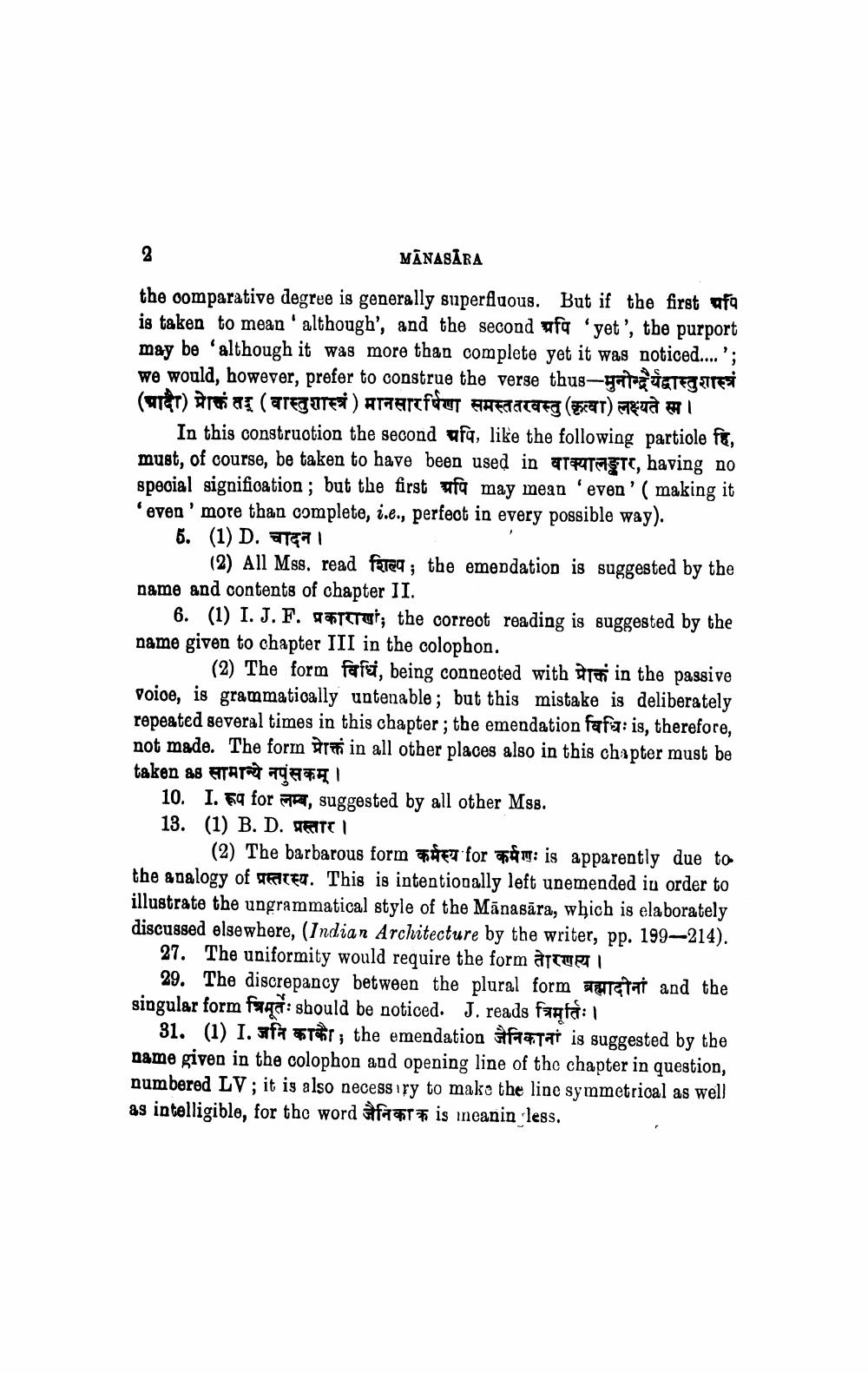________________
MANASĀRA
the comparative degree is generally superfluous. But if the first afa is taken to mean ' although', and the second afa 'yet', the purport may be although it was more than complete yet it was noticed.... '; we would, however, prefer to construe the verse thus-gartigTETITESİ (पादी) प्रेोकं तद् (वास्तुशास्त्रं ) मानसारर्षिणा समस्ततरवस्तु (कृत्वा) लक्ष्यते स्म ।
In this construotion the second afg, like the following partiole ft, must, of course, be taken to have been used in aTRITAGTC, having no special signification ; but the first afa may mean 'even' ( making it even more than complete, i.e., perfect in every possible way). 6. (1) D. atgal
(2) All Mss. read fate; the emendation is suggested by the name and contents of chapter II.
6. (1) I. J. F. Tut; the correct reading is suggested by the name given to chapter III in the colophon.
(2) The form fafci, being conneoted with oth in the passive voice, is grammatically untenable ; but this mistake is deliberately repeated several times in this chapter ; the emendation fafat: is, therefore, not made. The form or in all other places also in this chapter must be taken as ATATAN 1
10. I. 69 for Rs, suggested by all other Mss. 13. (1) B. D. GRITTI
(2) The barbarous form 7 for $: is apparently due to the analogy of FITFU. This is intentionally left unemended in order to illustrate the ungrammatical style of the Mānasāra, which is elaborately discussed elsewhere, (Indian Architecture by the writer, pp. 199-214).
27. The uniformity would require the form aftur
29. The discrepancy between the plural form aastat and the singular form fanat: should be noticed. J. reads fanta: 1
31. (1) I. जनि काकी; the emendation जैनिकानां is suggested by the name given in the colophon and opening line of the chapter in question, numbered LV; it is also necessary to make the line symmetrical as well as intelligible, for the word far is ineanin less.




